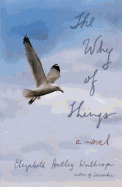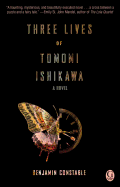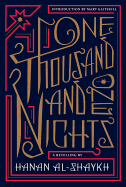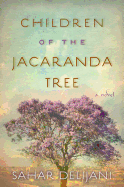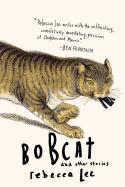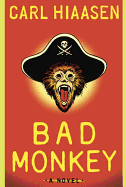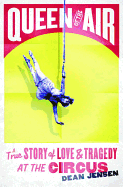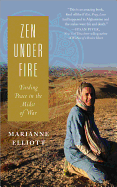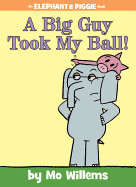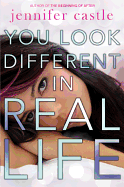 |
| photo: Alison Rosa |
Sahar Delijani was born in Evin Prison in Tehran, Iran, in 1983, the same year both her parents were arrested because of their political activism against the Islamic regime. In 1996, when she was 12 years old, her parents moved to Northern California. She earned a B.A. in Comparative Literature from Berkeley, where she also met her husband. Today they live in Turin, Italy, where Delijani has been writing for a range of literary publications. She's been twice nominated for the Pushcart Prize and Children of the Jacaranda Tree is her first novel (see our review below).
Children of the Jacaranda Tree alternates among several characters, all of who seem to reflect a part of you. What made you decide to use multiple points of view?
What happened in 1980s in Iran with the mass arrests and the mass executions in 1988 was not something that solely affected the lives of those in prison. It was an event that turned everybody's life upside down--the victims as well as their families and friends. That is why this novel could not be written from a single person's point of view but from the perspective of all those who were in one way or another brought together due to this tragedy. And above all, I wanted this novel to give voice not only to the victims but also to the suffering of their families and their children who have had to live with their unspoken grief for years and decades. Hence, everybody had to have a say, the children as well the grandparents and the sisters and the aunts; every person whose life after 1988 was never the same again.
The jacaranda tree plays a significant role both physically and symbolically in the novel. Why this tree?
The jacaranda tree is not a common tree in Iran. However, my grandmother wanted to have one and planted one in her garden, which unfortunately did not survive the pollution and the winter cold of Tehran and died soon after. For me, this tree in a way symbolized the Iranian revolution. There was so much hope for this revolution. There was so much it was supposed to bring for the nation who fought for it, which it did not. The Iranian revolution was stolen from the people who had made it happen, and instead what they received was tyranny and violence from those who believed themselves to be its winners. Hence, like the jacaranda tree that my grandmother desired so much, the revolution, too, never made it.
Tell us about the bracelet of date stones that Amir, while imprisoned, creates for his daughter.
The bracelet of date stones is a bracelet my father made for me, when I was born while he was in prison. He made it from the stones of dates they would have for breakfast on Fridays. Later on, I found out that making "jewelry" of date stones was quite a common practice in prison as it was the only thing they had to make anything with.
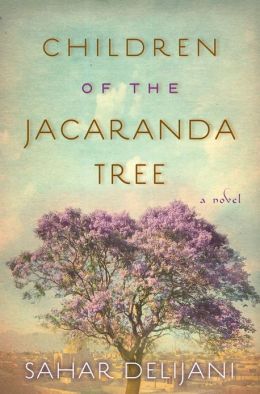 Your first short story was about the date stone bracelet as well. Was that the only part of the book that started as a short story?
Your first short story was about the date stone bracelet as well. Was that the only part of the book that started as a short story?
Most of the chapters in the novel were first written as short stories. The idea of the novel took shape very slowly, as I realized every time I wrote a story, I always went back to the same theme, which was the theme of the mass executions in 1988. It wasn't until the fifth chapter that I thought I could intertwine the stories and turn the work into a novel.
The "children of the jacaranda tree" are the children of those who were imprisoned for their political activism. Each of them has a distinct and personal connection with Iran. How would you characterize your personal connection with your native country?
When I was 15 and had been in the U.S. for just three years, I was obsessed with the idea of going back and living in Iran. I am still obsessed with the idea. Despite all the problems in Iran, every time I go back to visit I am filled with such strong emotions, from extreme sadness to extreme joy, that I feel I can barely keep them inside me. There is no place as inspiring as Iran for me, and whenever I think about my country, be it in my studio in Turin or in my parents' garden in California, it simply feels like something inside my soul burns.
Leila is not one of the "children"; instead she is one of the people left to raise the children. Is Leila based on someone in particular?
Leila is someone who is not involved in politics, is not in prison, but her life changes because of what happens to her sisters and the presence of her nieces and nephew. She, therefore, embodies all the aunts and uncles who had to sacrifice their lives to take care of the "children." The idea of Leila came to me thinking of my young aunt who had to help my grandparents raise my brother, my cousin and me. I imagined what would have happened if my aunt was indeed in love with someone, who was ready to offer her something better, and she wouldn't have been able to do it because of her sense of responsibility and above all the love she felt toward the three children.
Another fascinating character outside the "children" is Reza, whose father was part of the regime. Reza obviously has a different set of circumstances that influence who he is, and that's beyond the scope of the novel, but do you know someone who was like Reza?
Reza is a mixture of all the people I got to know in Turin after the 2009 protests in Iran and the beginning of the Green Movement. Until then, everyone I knew who was against the regime belonged to the same category of people who had fought against the regime in the '80s--mostly my parents' prison friends and their children. But with the Green Movement, a new wave of young people with whom I had had no connection at all until then was out on the streets, protesting against the same system. And that for me is the great triumph of this movement. There were many stories and news articles at the time about the children of those who were involved in the government, now protesting against the same government their parents worked for. That was what the Green Movement meant: the bringing together of an entire nation that was once divided between the victims and the perpetrators. The children were now united, they all wanted the same thing, and that was deep reform in the system.
Turin, Italy, is a setting in the novel and you now live there with your husband. Is there a large expat community there, and are you active within it?
There were barely any Iranians when I first arrived in Turin in 2006. However, after the 2009 protests, everything changed. There are now almost 2,000 Iranian students here and also many political refugees who had to leave Iran because of their activism in 2009. I cannot say that I am active, but I do like spending time with them, especially during Persian holidays.
In an essay on why you wrote Children of the Jacaranda Tree you say you tried writing novels before this one but discovered you needed to begin by writing your own stories. Are there more of your own stories to tell or does this novel achieve that for you?
The strong sensation that I have is that I have not told everything with this novel. With my next novel, I will be speaking about the same theme. I believe there is still so much more to say. --Jen Forbus of Jen's Book Thoughts
Sahar Delijani: A Branch of the Jacaranda Tree
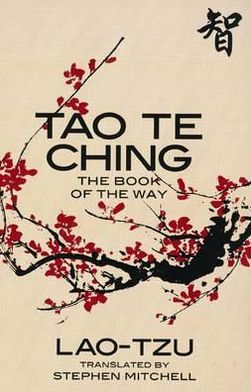




 Your first short story was about the date stone bracelet as well. Was that the only part of the book that started as a short story?
Your first short story was about the date stone bracelet as well. Was that the only part of the book that started as a short story?